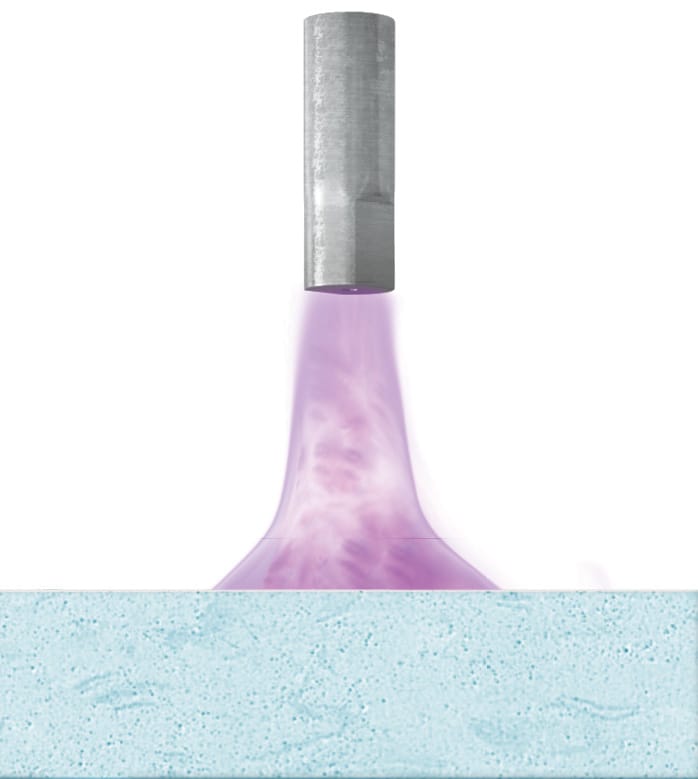4.3.6 Electrochemical Surface Treatments
Electrochemical treatments increase the surface energy of plastics that are difficult to bond. The most common forms of electrochemical treatment include plasma, corona and flame treatment.
4.3.6.1 Plasma Treatment
Plasma treatment increases the bondability of a substrate by bombarding the substrate surface with ions of a gas, such as argon, helium, nitrogen and oxygen, at low pressure. Several mechanisms have been proposed to explain the enhanced bondability created by plasma treating. For example, plasma treatment is hypothesised to crosslink the substrate’s surface, strengthening the joint boundary and preventing a thin layer of the substrate from peeling off. In addition, the surface oxidation caused by plasma treatment introduces reactive functionalities, which then increase the surface’s reactivity and wettability. Another theory attributes the effectiveness of plasma treatment to an increased interfacial diffusion created by chain scissions in the substrate’s surface. The interfacial diffusion is increased by lowering the surface viscosity and increasing the molecular mobility of the plastic’s surface.

These methods work by blasting a surface with free electrons to increase the dyne level, but this method usually only temporarily increases the surface energy, so bonding must occur immediately after the treatment steps.

